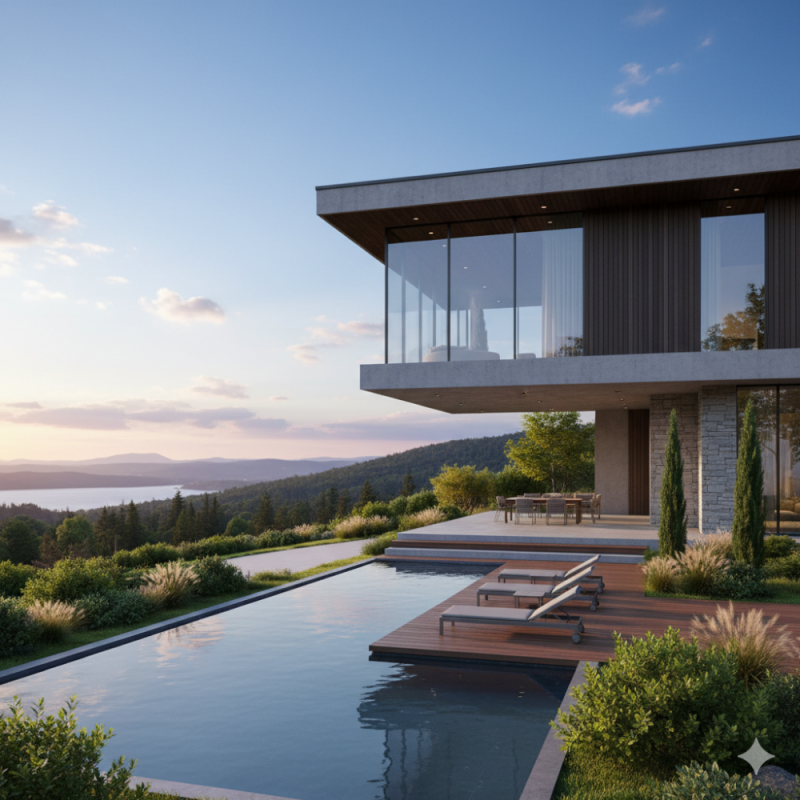How House Rendering Services Can Transform Your Home’s Exterior

Your home’s exterior is the first thing people notice when they visit or pass by. Over time, exposure to weather, sunlight, and pollution can make even the most beautiful houses look tired and dull. This is where house rendering services come in — offering a practical, attractive, and long-lasting way to refresh and protect your property’s exterior walls.
If you’ve ever wondered how rendering can completely change the look and feel of your home, this guide explains everything you need to know in simple terms.
What Is House Rendering?
House rendering is the process of applying a special mixture — often made from cement, acrylic, lime, or silicone — to the external walls of a building. The goal is to give your walls a smooth, clean, and weather-resistant finish.
In simple words, rendering acts like a protective coat for your home. It hides imperfections, prevents water damage, and adds a modern look to your property. Exterior rendering services are popular among homeowners who want their houses to look new again without rebuilding or repainting every few years.
Why Homeowners Choose Rendering
There are many reasons why rendering has become one of the top home improvement choices. Here are some of the most important ones:
1. Better Protection Against Weather
Rain, wind, and temperature changes can cause your exterior walls to crack, fade, or absorb moisture. Rendering adds a protective layer that shields your home from harsh weather conditions. It helps prevent issues like dampness, peeling paint, and wall erosion.
2. Improved Appearance
Rendering instantly transforms old, uneven, or stained walls into a clean and uniform surface. You can choose from smooth, textured, or even decorative finishes depending on your style. Modern house rendering can make a decades-old property look like a newly built home.
3. Increased Property Value
A well-rendered home looks more attractive and well-maintained. Curb appeal plays a big role in property value, and potential buyers are more likely to be drawn to a home that looks clean, modern, and solid.
4. Energy Efficiency and Insulation
Rendering can also improve your home’s insulation when combined with external wall insulation systems. This means your home can stay warmer in the winter and cooler in the summer, reducing the strain on your heating and cooling systems.
5. Low Maintenance
Once completed by experienced house rendering contractors, the render surface can last for years with minimal care. Occasional cleaning or repainting is usually all that’s needed to keep it looking great.
Types of House Rendering
Not all rendering materials are the same. Each type has its own benefits and is suited to specific wall types and climates. Here are the most common types of house rendering you’ll come across:
1. Cement Rendering
Cement rendering is the traditional method and is still widely used. It’s made from a mix of cement, sand, and lime. This type gives a strong, solid finish and can be painted in any color. It’s especially good for brick and concrete homes.
2. Acrylic Rendering
Acrylic rendering uses a resin-based mix that offers extra flexibility. It’s less likely to crack and provides a smooth, stylish finish. Acrylic render is also resistant to water and UV rays, making it ideal for modern homes.
3. Silicone Rendering
Silicone render is breathable and weather-resistant. It’s self-cleaning, meaning dirt and dust don’t stick easily. Many homeowners prefer silicone rendering because it stays clean and fresh for years with very little maintenance.
4. Lime Rendering
Lime render has been used for centuries, especially on older or heritage buildings. It’s eco-friendly, breathable, and helps prevent moisture build-up in old walls. Lime rendering is perfect for restoring traditional homes while keeping them historically accurate.
5. Monocouche Rendering
This is a modern, one-coat render system that combines beauty and efficiency. It’s applied in a single layer and can be colored through the mix, meaning you don’t need to paint it later.
Each of these render types can be customized to match your preferred texture, color, and finish. The right choice depends on your home’s age, wall condition, and design style.
The Rendering Process – Step by Step
Understanding how house rendering services work can help you appreciate the craftsmanship involved. Here’s a simple overview of the process:
Inspection and Preparation:
The contractor inspects your walls for cracks, dirt, or old paint. Any damaged sections are repaired to ensure a smooth surface.
Cleaning and Priming:
The walls are cleaned, and a primer or bonding agent is applied to help the render stick properly.
Applying the Render:
The chosen render material is spread over the surface using trowels or sprayers. It’s carefully leveled and smoothed out.
Finishing Touches:
The render is allowed to set, and any desired textures or designs are added before it fully dries.
Painting or Sealing (if needed):
Depending on the type of render, some homes may get a final coat of paint or sealant for added durability.
A professional house rendering contractor ensures every step is done correctly so your walls stay strong and beautiful for years.
How Rendering Transforms the Look of Your Home
The difference after rendering can be dramatic. A dull, uneven exterior can become a sleek, modern surface that reflects light beautifully. Homeowners often say their property feels “new again” after the process.
- From Old to Modern: Rendering gives older homes a clean, updated look without needing major renovations.
- From Rough to Smooth: It hides wall imperfections, cracks, and patches for a flawless appearance.
- From Dull to Stylish: With color and texture options, you can create a personalized finish that suits your taste — from smooth minimalist styles to rustic textures.
Whether you live in a brick home, concrete structure, or stone cottage, rendering brings life and charm back to your exterior.
Choosing the Right Rendering Contractor
The success of your project depends greatly on who you hire. Look for experienced house rendering contractors who understand your local climate, wall materials, and desired results.
Before starting, make sure to:
- Review their past work and portfolio.
- Check reviews and client feedback.
- Ask about materials, warranties, and timeframes.
- Discuss your preferred style and finish options
A reliable contractor will guide you on the best render type for your home and ensure a professional, lasting result.
Maintaining Your Rendered Walls
One of the biggest advantages of rendering is that it’s easy to maintain. Regular cleaning with mild soap and water keeps the walls looking bright. Avoid using harsh chemicals or pressure washers that could damage the surface.
Inspect the render once a year for small cracks or dirt build-up. Early maintenance helps your render last longer and keeps your home looking beautiful for many years.
Conclusion
House rendering services offer more than just an exterior makeover — they provide protection, insulation, and a long-lasting upgrade that completely transforms your home’s appearance. Whether you want a modern, smooth finish or a textured, traditional look, there’s a render type to suit every style.
When done by skilled exterior rendering specialists, the results speak for themselves: a clean, polished, and weather-resistant home exterior that stands the test of time. Rendering truly is one of the best ways to enhance your property’s beauty, strength, and value without complicated renovations.




